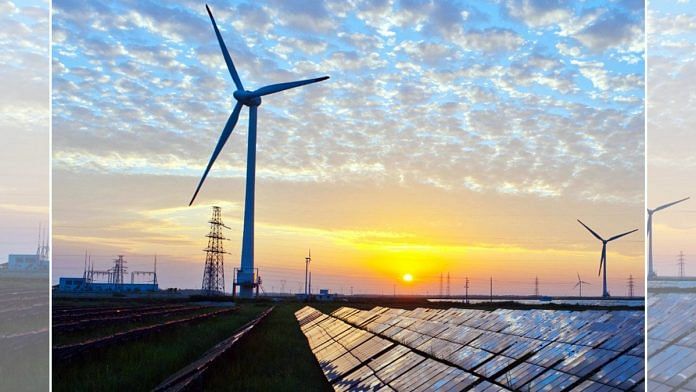- Tasmania met 100% renewable target after the 29th wind turbine went online at Granville Harbour on the island’s west coast.
- The majority of the island’s power generation came from hydroelectric systems in 2018/19.
- Other states are forging ahead with their own green energy plans.
The Australian island state of Tasmania now runs on 100% renewable energy, having met its goal to be fully self-sufficient on green energy two years ahead of schedule.
Tasmania achieved the feat in late November after the 29th of 31 wind turbines at Granville Harbour, on the island’s west coast, went online. The state will have access to a total of 10,741 GWh of renewable generating capacity – well above its yearly energy demand of 10,500 GWh – once the final two are commissioned.
Energy minister Guy Barnett said in a statement: “We have reached 100% thanks to our commitment to realizing Tasmania’s renewable energy potential through our nation-leading energy policies and making Tasmania attractive for industry investment, which in turn is creating jobs across the state, particularly in our regions.”
Also read: India seeks cheaper renewable energy contracts to spur projects
Hydropower key to Tasmania’s success
Tasmania has long had one of the greenest energy supplies in Australia, with the city of Launceston the first in the country to be lit by hydropower when the Duck Reach Power Station opened in 1895. In 2018/19, 90% of the island’s power generation came from hydroelectric systems, with much of the rest coming from wind.
The island state is now looking at doubling its renewables generation to a world-leading target of 200% of its current needs by 2040. Tasmania is also progressing with its Battery of the Nation and Marinus Link green energy projects to support Australia’s country-wide transition to a green energy future, and investing AUD2.6 million ($1.9 million) in three large-scale renewable hydrogen feasibility studies.
Tasmania follows the Australian Capital Territory, home to the city of Canberra, in becoming fully powered by renewables, although the latter only generates 5% of its needs, with the remainder coming from the National Energy Market (NEM).
Unsurprisingly for a country renowned for its natural resources, the NEM is overwhelmingly powered by coal and gas. But ACT buys clean energy from solar and wind power from across the territory and four other states for every watt of non-renewable energy that Canberra uses.
Australia still largely running on fossil fuels
Australia’s renewable electricity generation has more than doubled over the past decade. However, fossil fuels still made up the vast majority (94%) of the country’s primary energy mix in 2018/19, with oil accounting for 39%, coal 29% and natural gas 26%.
In 2018/19, green energy sources accounted for just 6% of the country’s total consumption. Of these, the burning of biomass such as firewood and bagasse – the remaining fibres after the pulping of sugar cane – made up nearly half (45%) of all renewable energy consumption over the period.
Australia is also one of the world’s largest exporters of energy – with 88% of black coal production and 74% of natural gas production sent abroad in 2018/19. Liquefied natural gas exports also increased by 21% over the period.
States forging ahead with green energy plans
Although Prime Minister Scott Morrison reportedly sees gas as key to Australia’s COVID-hit economy, many states are forging ahead with their own green energy plans.
New South Wales recently passed legislation for generation of an extra 12 GW of renewable energy over the next decade. This is equivalent to Australia’s existing large-scale wind and solar energy capacity, with some arguing it could break up the NEM as it is known today.
The state of Victoria has also announced it is investing AUD1.6 billion ($1.2 billion) in renewable energy hubs across the state, while the Queensland parliament has formalized plans for a AUD500 million ($372 million) investment in renewable energy generation.
Also read: Why it’s always sunny in India’s renewable power market
Elite few fully self-sufficient on clean energy
Tasmania becoming self-sufficient in renewables puts it in an elite position, currently shared by few other countries or regions in the world. Iceland is the global leader in green power, with 99% of its electricity consumption powered by renewables.
In Europe, Scotland saw 90% of its electricity supply come from renewables – predominantly wind – in 2019, while clean energy sources made up nearly half (47%) of the UK’s total electricity generation in the first quarter of 2020. In Germany, renewables accounted for 48% of the country’s electricity consumption between January and September.
Kenya is spearheading clean energy efforts in Africa, with 70% of its electricity generation sourced from geothermal energy. In South America, home to some of the largest hydropower plans in the world, countries such as Brazil, Venezuela, Colombia, Argentina and Chile are leading the way in renewable energy generation.
With countries across the world looking to reduce their emissions and meet their climate change commitments under the Paris Agreement, places such as Tasmania could help provide a blueprint for helping keep the global temperature rise under 2C.
This article was first published in the World Economic Forum



